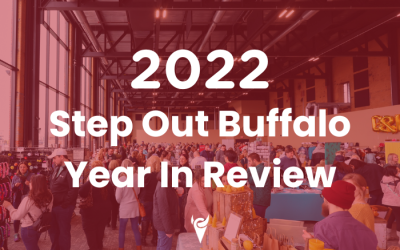This post was written by Emily Martin, Owner of Ally HR Partners LLC
More than ever, the pressure is on for employers to be sufficiently compensating employees.
Between rising living costs, talent scarcities and competition, and a heightened narrative on equity, the mounting reasons businesses are being bombarded with to raise pay can be overwhelming. Under such stress it can be easy to react and make decisions in efforts to move the needle or avoid issues, but like most situations, taking action out of duress or desperation is probably not a good move.
As you consider adjusting employee compensation, we’ve put together some tips and advice to help you make better decisions, avoid creating more problems for the future, but also to give some ideas and peace of mind as you weigh your own business’ livelihood against this persisting demand.
Here’s some helpful tips for employers when considering increasing employee pay:
1) Don’t react
In these times when recruiting is tough and turnover rates may be spiking, it can be enticing to try and make a quick decision to adjust starting wages, or increase current staff amounts in an attempt to stop the bleeding. Although market rate, cost-of-living, or other adjustments certainly are justified and should be done, be careful to make educated decisions that won’t bite you later.
While the mainstream narrative may have a lot to say about Target’s $24/hr starting rates, “turnover tidal waves” and other extreme statements, taking some time to practice equanimity and using real information to make decisions is smart. This can include actual market benchmarking data or even collecting feedback from your own staff before making decisions. And remember, this too may pass, but any increases you make now will stay forever.
Although it’s not illegal to reduce employee pay, it certainly is unwise as the results are almost never anything but negative. Any increases you make now are going to stay with your business into the future and compound over that time, and you risk saddling yourself with those increased labor costs even if other factors like sales and pricing change.
2) Think big picture
Desperate times often can bait us into desperate measures, and if one area of the business is on fire (staffing), it can be hard to keep our eye on the bigger prize. But remember: increasing base pay rates impacts more than just that straight regular compensation costs. These increases have compounding effects on other areas of total compensation – think overtime rates, future merit increase amounts, and even company retirement contributions (4% of a higher wage is more contributed, which also means more matched).
Again, this does not mean that increases should not happen or are not warranted in this time of extreme inflation, but considering the overall impact to employee compensation with these secondary benefits in mind is wise when determining the base number increases you may want or need to make.
Big picture thinking should also be applied to the scope of your employee population. Consider how pay bumps in one area of your business will likely demand that it be done in others’ tail chasing. For example, if you increase starting wages for new hires to try and impact hiring efforts, it also will likely mean you will need to make adjustments to existing staff rates, as certainly resentment and animosity will surface if those coming in are making as much or more than your dedicated staff who have been with you. Word also spreads internally if just one department is adjusted over another.
3) Consider other options
Cash is not the only way to compensate employees. There are many other options that can enrich the overall compensation package, and in fact may actually be more alluring or more of a sticking point for staff than just pay.
Differentiating yourself through enhanced or unique employee benefits is also an option. Some ideas include offering or increasing medical, dental, or vision contributions; contributing to HSA or FSAs for staff; student loan repayment benefits; retirement savings (required in NYS now by the way); built-in supplemental disability coverage; or even perks like flexibility in schedule or ability to work from home.
Also, make sure that if you already offer these valuable benefits, or plan to roll them out, that your existing employees or new hire prospects know about them. Benefits education is generally a drastically overlooked area of HR, but the return of doing a good job in this area cannot be understated. Get this info into onboarding paperwork, on job postings, and pull these providers in for lunch and learns. Adding value to overall compensation in these ways is often much less costly overall for businesses (there are tax benefits, and returns in employee health and well-being which impact productivity, etc.) AND they can have a much greater impact on employee’s overall quality of life than cash.
There’s no shame in choosing to invest in this area of employee compensation over straight cash – and arguably the overall ROI for you, your staff, their families, and the community is so much greater.
4) Have a plan
In addition to increased pressure and demands from the outside world from the media narrative, hiring pressures, etc., also try to avoid succumbing to individual internal grumblings and complaints without taking a big picture, systematic approach.
If you are only increasing employee compensation after individuals raise complaints about increased responsibilities, cost of living, etc. then you risk falling into a pattern where only the squeaky wheels gets the oil. This then could mean those employees who aren’t as vocal or bold will be overlooked, even if they are consistent, reliable and valuable every day.
Also, responding to this behavior sets a bad precedent for future employees and conversations about pay. The better move? Have a system or plan in place for employee increases. This also allows you be pro-active in making adjustments vs. responsive, and that means also getting ahead of any ill-will caused by feelings of inadequate pay. Whether this is an annual merit increase program or set timeline to review market rates and make global adjustments, a systematic, data driven, pro-active approach is a better move to avoid constant turmoil and tail chasing.
5) Don’t get held hostage
In general the advice given here is in reference to bigger picture decisions on employee compensation, but we cannot leave out similar guidance on thinking when making one-off decisions about employee pay.
If you have an employee who is threatening to leave based on straight dollars or even resigns for an opportunity offering more, be careful not to throw money at the situation to get them to stay. Again, decisions here have ripple affects into the rest of the organization, setting precedent for others to repeat the same behavior or causing inequity that you will have to clean up later.
The better move? Get ahead of any of this by making sure your employees are paid fairly now. This helps avoid future issues, but also just gets you a better ROI on the gesture and cost of an increase, as certainly doing this only in an ultimatum situation undermines most of the “feel good” effect of doing this randomly and of your own volition.
Data shows that in most cases counteroffers are futile, and more than likely you’ve only delayed that employee’s departure. If the employee wasn’t willing to come have a conversation with you about their pay rate or other factors that were making them unhappy enough to consider leaving, it’s not likely that moving forward they will feel they can, or should, approach the situation any differently…which means they will do the same again.
6) Be transparent
Employees often don’t understand the truth behind business margins, costs, and general hardships. Despite the current narrative out there, we know that small business owners are not in the same boat as corporations when it comes to major profits, exploitation, etc. And if a small business is successful, it’s only because an amazing amount of effort and thought goes into keeping margins and costs tight – a constant balancing act.
Even doing basic education with your staff on things like costs and margins could be helpful in creating a more accurate picture of the business’ economics while also helping top create more empathy and understanding around why you can and cannot make certain decisions, including decisions about pay increases. This kind of transparency can also have the added benefit of cultivating feelings of responsibility and empowerment amongst employees, helping them realize the significant and shared role they play in business health and success in their own daily performance.
Whether it’s efforts to reduce waste, increase sales, or providing great customer service, arming your staff with information on how the small individual actions they take can impact business results may help create a shared feeling of responsibility and ownership. Which also means shared ownership of those results, results that everyone can potentially share in the fruits from later (pay increases!).
Although the thought of sharing this information with staff can be scary, taking this leap to trust your employees can go a long way with trust that they then have in you – and trust is the foundation of other positive behaviors like vulnerability, accountability, and commitment, all which impact success.

This post was written by Emily Martin, Owner of Ally HR Partners LLC, a Buffalo-based HR consulting firm that helps small businesses identify and implement custom solutions to their people problems and opportunities. Often a business’ #1 expense, Ally HR Partners believes your people should be your #1 asset. Through an integrative partnership approach, Ally becomes your internal expert on all things HR including compliance assurance, performance management, and strategic HR initiatives designed to make the most out of your Human Capital. For more information about how Ally can work for you, visit AllyHRPartners.com
















